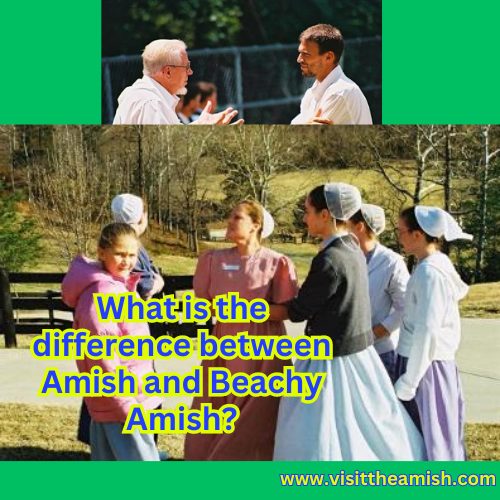Key Differences Between Beachy Amish and Old Order Amish
The Beachy Amish and Old Order Amish are two distinct Anabaptist groups that share some similarities but differ in several key aspects. The Beachy Amish are also more accurately known as Beachy Amish-Mennonite.
Religious Beliefs and Practices
Both groups follow the tenets of the Dordrecht Confession, including practices like foot washing and non-resistance. However, the Beachy Amish emphasize doctrines such as assurance of salvation and are more mission-oriented, founding congregations worldwide. They also hold Sunday School and other formal Bible study sessions, which the Old Order Amish typically do not.
Organization and Leadership
The Beachy Amish and Old Order Amish are organized congregationally rather than by a centralized leadership. However, the Beachy Amish worship in specially constructed church buildings, while the Old Order Amish hold services in members’ homes.
Dress and Appearance
Both groups wear plain clothing, including head coverings for women and beards for men. However, the Beachy Amish dress may differ slightly in appearance from the Old Order Amish.
Education
While both groups tend to have limited formal education, Beachy Amish children are more likely to attend high school than their Old Order Amish counterparts.

Technology Acceptance
One of the most significant differences lies in the acceptance of technology. The Beachy Amish allow a higher degree of technology, including automobile ownership, electricity, telephones, and limited computer usage in the home. In contrast, the Old Order Amish generally reject these modern conveniences.
Origins and History
The Beachy Amish movement emerged in the late 19th century from an Old Order Amish community in Somerset County, Pennsylvania. The progressive segment, led by Bishop Moses M. Beachy, eventually separated from the Old Order Amish in 1927 over the issue of strict shunning.The Beachy church then gradually adopted more technology and practices like Sunday schooling.
While sharing some fundamental beliefs and traditions, the Beachy Amish and Old Order Amish have diverged in their approach to technology, education, and certain religious practices, reflecting the distinct paths they have taken since their separation over a century ago.
The Beachy Amish movement originated in 1927 from a division within an Old Order Amish community in Somerset County, Pennsylvania. Here are the key details:
- Moses M. Beachy was a bishop in the Casselman River Old Order Amish settlement. He refused to excommunicate and shun members who left his congregation to join a more progressive Conservative Amish Mennonite group nearby.[1]
- In 1927, disagreements arose over issues like Sunday school, use of electricity, automobiles, and the strict shunning practice. The conservative faction withdrew from Beachy’s congregation to maintain ties with other Old Order Amish groups.[1][2]
- Beachy’s group became known as the Beachy Amish. They allowed electrical conveniences, tractors, automobiles, and constructed meetinghouses, differing from the Old Order Amish restrictions.[1]
- The Beachy Amish movement then spread as other progressive Amish groups in Ohio, Indiana, Illinois, Iowa, Kansas, Oklahoma, and Virginia affiliated with Beachy’s contingent between the 1940s-1960s, having adopted similar technological allowances.[3][1]
- While originating from the Old Order Amish, the Beachy Amish gradually embraced more evangelical beliefs like assurance of salvation and Sunday school over time.[2]
So in essence, the Beachy Amish emerged from Bishop Moses Beachy’s refusal to shun members over technological issues, leading to a division from the Old Order Amish in 1927 and the formation of a more progressive offshoot group.
Citations:
[1] https://gameo.org/index.php?title=Beachy_Amish_Mennonite_Fellowship
[2] https://www.patheos.com/blogs/rogereolson/2016/01/denomination-of-the-week-beachy-amish/
[3] http://www.beachyam.org/amishmennonites.htm
[4] https://en.wikipedia.org/wiki/Old_Beachy_Amish

